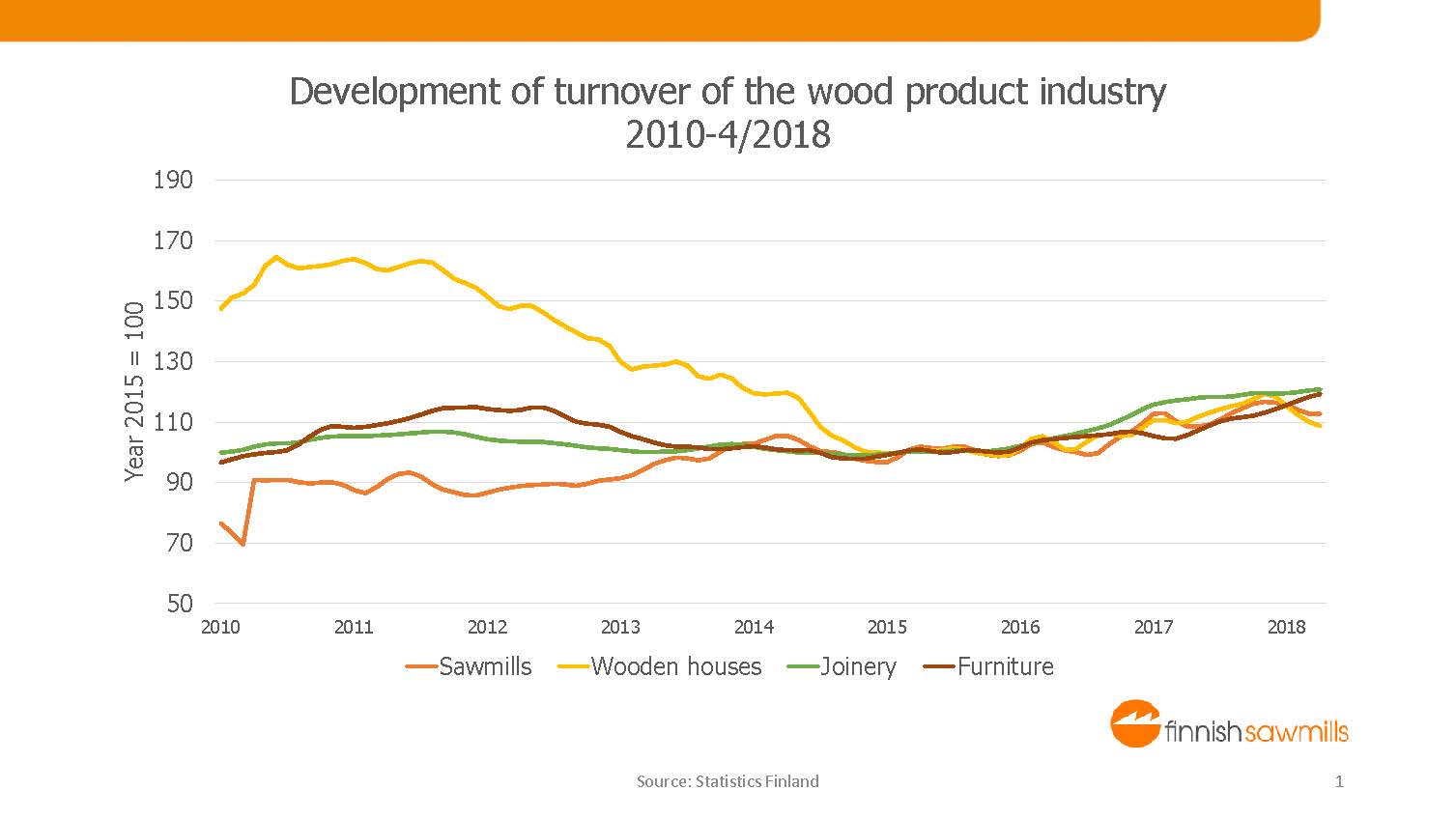The sawmills are often the economic drivers of local communities. In remote areas, sawmills have significant impact on employment. It has been estimated that every job at a sawmill has an indirect impact of five more. In addition, sawmills bring provinces export earnings, which benefits local economies in tax as well as in stumpage income.
Forest income is an important source of income around the country.
Stumpage income
Forest owner’s stumpage earnings increased to 2.2 billion euros in 2017, which is the second highest level in the 2000’s. Private forest owners share of these stumping earnings was 1.9 billion and forests owned by industry and the state was 0.3 billion euros.
Stumpage revenue is naturally affected naturally by the roundwood volume and unit price. The price of pulpwood has recently increased somewhat but stayed moderate and fairly even for a long time. The volatility of log prices has, to some degree, stabilised after the disruption caused by the financial crisis.
However, the trend of the log prices has been rising and in international price comparisons, Finnish logs are expensive.

Sawmill industry and GDP
The forest sector’s importance for the national economy has been in a trendy decline up to around 2010, when the significance is measured by the share of the GDP (Gross Domestic Product).
The decline up to 2010 has stopped and the industries’ share of the Gross Domestic Product has settled at six percent. In 2009, the wood product industry’s share collapsed to one percent.
The value of sawn timber production has grown since then, however the value of other wood product industries’ output has dropped.


Export of sawn timber
At the year 2017 sawn timber was the fifth most important exported good in Finland.
The sawmill industry’s production originates for the most part, from the domestic market. Only a small part of production technology is imported. The sawmills share of the net export earnings are large compared to other sectors.




